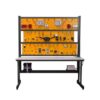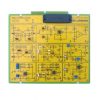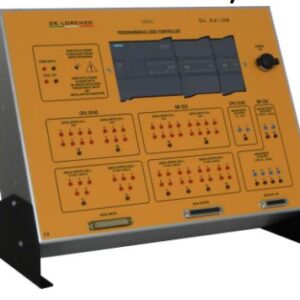The consequences of what has been done are immediate:
* the components are of general use and are personalized through a suitable software
* the tuning of the functions according to the needs of the user can be performed at the end of the installation
* modifications subsequent to the installation can be performed from any point of the plant and at any time without interrupting its functionality
Another advantage that is not immediately evident, but that must be considered in the right perspective is the possibility of realizing a remarkable energy saving by distributing the energy where and when it is needed, by interrupting it at the and by supplying it according to a suitable time program.
The devices used in the system must be able to perform the same functions for the automatic management of the buildings, both commercial and residential.
The performed functions are the following:
• control of the light
• control of the shutters
• control of the heating
• management of the loads
• display, information, operator control, monitoring and detection
• interfaces and other systems
De Lorenzo has designed a laboratory for the study of the home automation technology that allows the student a practical training, based on the performance of guided experiments.
For this laboratory, industrial type components have been educationally adapted by using the modular panel system that allows their step by step assembling from the simplest circuit to the most complex systems.
Starting from the basic principles the student follows an educational path that takes him, with the aid of highly educational manuals, to the study of the most complex circuits in a gradual and systematic way.
The study subjects include the following categories:
EIB LP Lighting plant
EIB SCP Shutter control plant
EIB SP Safety plant
EIB HAP Heating/air conditioning plant
EIB SM Scenery module
EIB PTT Plant with PLC, touch panel & time switch
EIB TOT TOTAL CONFIGURATION
For all the categories the manuals include practical exercises by using standard components.
Each experiment describes step by step from the design and configuration to the commissioning of the system.
Contemporarily to the training objectives, the student will find important information on how to use the management software with relevant terminologies which are required for the assembling of the systems.
In particular, the manual “Lighting plants” groups four exercises:
• On/Off type lighting plant
• Manual light regulation plant
• Automatic light regulation plant
• On/Off lighting and light regulation plant through remote control
For each of the other categories the manual describes the plant and, through guided exercises, allows the student to reach a certain familiarity with the different components of the system.
In particular, the shutter actuator for the shutter control plant, movement and alarm/smoke sensors for the safety plant, the ambient thermostat with the valve actuator and the messages/values visualizer for the heating/air conditioning plant and, at last, the scenery module that allows the saving and restoring of several sceneries where light values defined by 8 dimmer channels can be handled.
The modules
The system is basically “decentralized” and implies the absence of a control board that contains all the data of the plant; each device is composed of an “intelligent” part (a microprocessor) that contains all the instructions for its operation, hence:
• its name (physical address)
• what it has to do (functions implemented through the software)
• with what it has to do it (still through the software)
The system uses as a “bus” a dedicated cable to which the different compatible devices can be connected, without a particular logic; it is obvious that this represents a remarkable advantage both at the time of the installation and when expansions of the plant are needed.
The system transfers the data in serial form; the transmission is balanced in base band.
The transmission speed is 9600 baud.
HOME AUTOMATION
The houses and all the other buildings that the man has erected for his own activities (offices, schools, shops, factories, etc.) have been and still are in continuous progress.
In fact, so many improvements have been added during the years to reach, in particular, the following objectives: higher safety, possibility to live more comfortably, possibility to better perform your job and your activities.
The traditional installation system for buildings has been for years mainly concentrated on the distribution and control of the electrical energy, but today this is not sufficient any more.
In modern systems the requirements have changed and have multiplied, mainly for what concerns advantage, flexibility, centralized and decentralized controls, intelligent connections of different operating sections and systems, communication easiness, environmental compatibility and minimization of the use of energy and of the operating costs.
A traditional electrical plant with such characteristics is more complex and involves a higher number of components with the relevant consequences: a tangle of cables, a wide range of non compatible equipment and components, a demanding design work and, most of all, an expensive system.
Therefore, a traditional plant is practically inadequate to fully satisfy such requirements, at minimum design and operating costs.
The home automation system offers the right solution.
This type of system, custom tailored to respond to the most current requirements relevant to the electrical plant, needs just a single bipolar conductor through which all the end users connected to the bus communicate among them.
The products are compatible and interoperating among them and, therefore, can live together in the system even if they come from different manufacturers.
The controls, the signals, the necessary data for the supervision and all the parameters of the plant have as a single transmission media a “single bipolar cable”, the bus cable.
Such circumstance implies a drastic reduction of the times for laying the conductors and all that is needed for their installation.
The functionality of the plant is then determined by means of a software package, through which the single components all connected in parallel to the single necessary bipolar line gain their “individuality”, that is can be identified one by one, through an address, that is the identification number of the device, and a “conscience” of their tasks, that is the personalized operating program for the type of plant where they are installed.
















